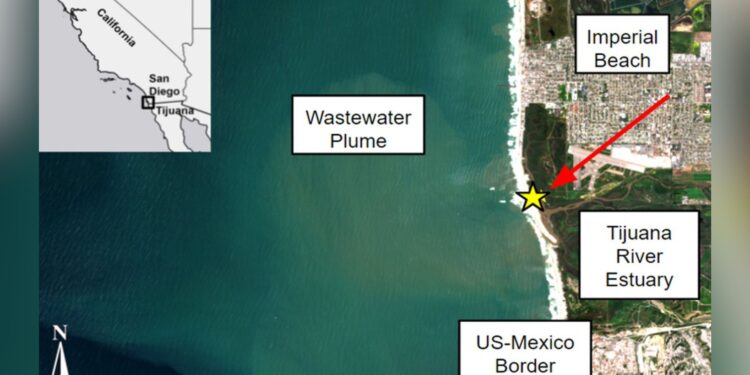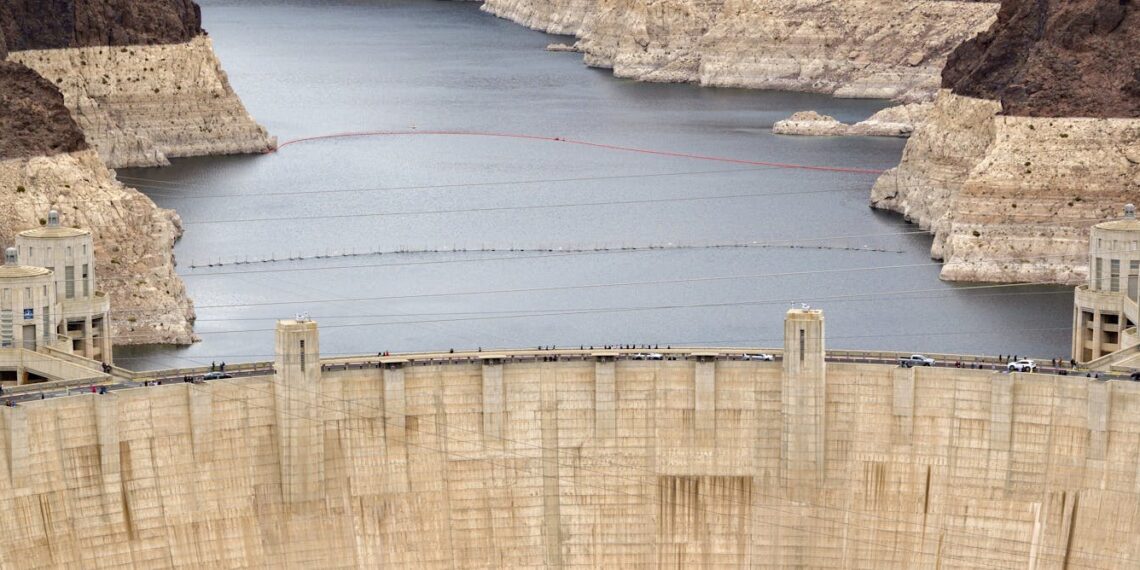Login to Continue Learning
A NASA instrument aboard the International Space Station has detected sewage contamination spilling into the Pacific Ocean off Southern California’s coast, originating from the Tijuana River. This river flows from Mexico into California and drains directly into the ocean, transporting millions of gallons of untreated sewage.
The Earth Surface Mineral Dust Source Investigation (EMIT) was originally designed to map minerals in desert regions but now provides insights into water quality. EMIT identified phycocyanin, a pigment found in cyanobacteria, within a massive wastewater plume off the mouth of the Tijuana River.
Cyanobacteria can cause illness through ingestion or inhalation, according to NASA. EMIT analyzes light reflected from Earth’s surface, breaking it down into hundreds of visible and infrared color bands. Each material, including pollutants, has a unique spectral signature that allows scientists to identify them. Researchers matched the satellite data with ground-tested water samples, both confirming the presence of phycocyanin.
This issue is not new; Southern California beaches near the U.S.-Mexico border have repeatedly faced closures due to contamination. The Tijuana River discharges millions of gallons of wastewater annually into the ocean, posing health risks to swimmers and military personnel in the area. San Diego County beaches have experienced over 1,000 days’ worth of closures, with a Department of Defense report documenting 1,100 cases of illness among Navy SEALs and other service members exposed to polluted waters.
Christine Lee, a scientist at NASA’s Jet Propulsion Laboratory and co-author of the study, said, “From orbit you can see that a wastewater plume is extending into places you haven’t sampled. It’s like a diagnostic tool at the doctor’s office telling us, ‘Let’s take a closer look.'”
Eva Scrivner, the lead author of the study, stated that their findings show a “smoking gun” for sewage in the Tijuana River plume.
La Jolla, Mission Beach, Pacific Beach, and similar northern San Diego County beaches generally meet state health standards. However, short-term advisories often follow rain or stormwater runoff—typically lasting up to 72 hours post-rain. These advisories are common at storm-drain outlets, creek mouths, and drain-adjacent zones. The County of San Diego samples water daily, issuing public advisories and closures when levels exceed health thresholds.
In May, Lee Zeldin, the administrator of the Environmental Protection Agency, announced that the U.S. International Boundary and Water Commission was accelerating an expansion of the South Bay International Wastewater Treatment Plant by 10 million gallons per day to mitigate the crisis.
📚 Reading Comprehension Quiz
What instrument aboard the International Space Station detected sewage contamination spilling into the Pacific Ocean off Southern California's coast?
Please login or register to take the quiz and earn points!



















